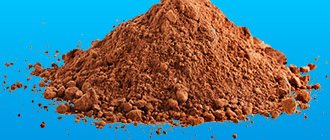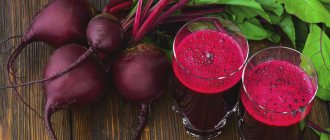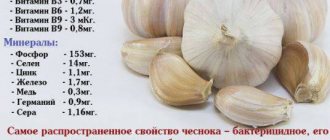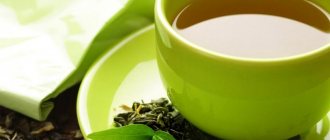Such a simple and modest flower as chamomile has many beneficial properties. It is also called “uterine herb”, as it is often used to treat gynecological diseases. The plant is often used for recipes for the treatment of cardiovascular diseases.
This wonderful medicinal plant relaxes the nervous system and muscles of the body. Has a beneficial effect on digestion and relieves headaches. At home, you can brew tea from this herb, make baths and compresses, lotions for inflammation, gargles for acute respiratory infections, etc.
The effect of chamomile on blood pressure
Does chamomile increase or decrease a person's blood pressure?
It’s correct to say that it slightly corrects it to normal. Despite the fact that official medicine does not recognize its effect on blood pressure, in folk medicine it is still used to treat hypertension. True, the plant will not have a pronounced and lasting effect! Therefore, pharmaceutical chamomile can only be used as an additional remedy that strengthens blood vessels, eliminates spasms and has a slight sedative effect.
Hypertension
If high blood pressure is associated with anxiety, stress and emotional tension, then chamomile tea will come in handy to calm the nervous system and relieve tension.
Hypotension
If blood pressure is low, then in this case the plant is recommended for use. You can make a decoction or infusion from it, as well as take non-hot baths with the addition of this component.
Why we love chamomile tea
Unlike many other medicinal herbs, chamomile has a pleasant taste and aroma. This allows you to add it to regular tea and treat or prevent various diseases.
The plant can also be used to treat small children, who are very difficult to get to drink another, bitter-tasting medicine.
Chamomile has the following effects on the body:
- antispasmodic;
- painkiller;
- anti-inflammatory;
- antiseptic;
- diaphoretic;
- sedative.
In addition, the plant can reduce the manifestations of allergic reactions and activate the function of the digestive glands.
Due to its anti-inflammatory and antiseptic properties, it is used in cosmetology to treat acne, dermatitis, seborrhea and other skin problems.
Chamomile is also used in the treatment of gynecological diseases, sore throat, tonsillitis, bronchitis and other inflammatory pathologies of the respiratory system.
People suffering from hypertension and hypotension specially grow it in their garden plots, since it has a positive effect on blood pressure, normalizing its levels.
Medicines based on this medicinal plant improve the functioning of the gastrointestinal tract, eliminate headaches and pain in the abdomen.
Chamomile can relax the muscles of the body and the nervous system, which allows it to be used as a calming, sedative.
Decoction-based baths help reduce sweating of the feet and body, and eye lotions can help get rid of some ophthalmological diseases.
Treatment of hypertension
The use of pharmaceutical chamomile for the treatment of hypertension must be in combination with medications prescribed by a doctor. Otherwise, the effect will be little noticeable and the disease will further progress. Hypertension is very dangerous due to its consequences and complications, therefore, the disease cannot be neglected.
Along with medications, you need to take decoctions or infusions of chamomile. Brew tea with the addition of other herbs and constantly measure blood pressure with a tonometer to monitor the improvement of the condition.
Chamomile reduces blood pressure well at stage 1, when the blood vessels are not yet seriously damaged.
Since hypertension tends not to manifest itself for some time, the patient may completely miss the initial stage. If symptoms such as headaches, ringing in the ears, dizziness, weakness and malaise become frequent, then it’s time to visit a general practitioner.
Chamomile tea for blood pressure
To make tea from this plant, you do not have to collect the flowers yourself. It is enough to buy them at the pharmacy. They can be in filter bags, which is convenient for brewing tea. Or they are sold in crumbly dried form, where you have to measure out the required amount of herb yourself.
The first option is very good because it is brewed in the same way as a regular tea bag. In this case, you will not have to strain the finished drink.
To get tea, you need to pour one bag with a glass of boiling water and leave for 15-20 minutes to infuse.
Then take out the bag and drink half a glass twice a day.
If the chamomile is in crumbly form, then you need to take a tablespoon of the herb. Pour in a glass of boiling water, cover with a lid and leave for at least 15 minutes. Then strain the drink and add a little honey if desired.
You can also make tea with chamomile, mint and honey. Mint is good at lowering blood pressure, so in this case it will be very useful. To prepare the drink, you need to take a tablespoon of chopped herbs, 3-4 mint leaves, a teaspoon of honey (uncandied). Pour 200 ml of boiling water over chamomile and mint and leave until completely cool. Then strain the drink through a strainer and add honey. Drink half a glass before meals, morning and evening.
Chamomile tea is indicated for those who are prone to colds as an additional means to strengthen the immune system. It is also recommended to drink it for poisoning, gastritis and liver problems, and insomnia. This drink perfectly strengthens the body as a whole.
Decoctions
To make a chamomile decoction, you need to take two teaspoons of dried herbs, add 250 ml of water and put on medium heat. Cook until boiling, then remove from heat and leave until completely cool. After this, the broth must be filtered. Drink 1/3 glass of this drink before each meal.
Also, a decoction can be prepared not only with chamomile, but also with other components that stabilize high blood pressure.
For example, with rose hips, hawthorn, mint, motherwort.
A decoction of chamomile and motherwort lowers high blood pressure. You need to take half a tablespoon of dry crushed herbs and pour a glass of boiling water. Place on low heat and cook for about seven minutes. After the time has passed, strain the drink and divide into two doses.
Tincture
In recipes for high blood pressure, in addition to chamomile, other herbs are usually used.
The following infusion has proven itself well:
- chamomile flowers (1 tbsp);
- hawthorn (1 tsp)
- valerian (1 tsp);
- motherwort (1 tbsp);
- rowan (1 tbsp).
All these components need to be crushed and poured into 300 ml. boiling water Leave to infuse overnight, strain the infusion in the morning. Take 100 ml three times a day, before meals.
Collection and storage
If you decide to collect the crop yourself, the main thing is not to confuse pharmacy chamomile with a field plant. The medicinal culture is distinguished by the special structure of its bud. The inflorescences have short petals and a convex core. The aroma of medicinal chamomile is reminiscent of honey.
Places for collecting chamomile should be chosen away from highways, factories and landfills. The optimal time for collection is mid-summer (July). It is correct to collect grass in the morning, in dry sunny weather, immediately after the dew has disappeared. When harvesting, only inflorescences with a short stem are cut off. The main length of the stem remains in place. Twigs and flowers need to be cut from different bushes. This approach will not harm the plant and will allow it to fully recover.
Dry chamomile naturally in the fresh air away from sunlight. Place the inflorescences on a wire rack or cloth in a small layer so that air can circulate normally. During the drying process, chamomile must be turned over so that the raw material dries evenly.
Dried chamomile is stored in linen bags or cardboard boxes. If you decide to store raw materials in glass, it is better to use cloth or parchment instead of a tight lid. Medicinal chamomile should be used no later than a year later.
Beneficial properties for the body
First of all, chamomile is known as an antidepressant. It perfectly calms the nervous system, relieves signs of fatigue after a hard day at work, and helps you sleep. It contains a huge amount of flavonoids, so it is often used as an effective natural antibiotic.
The flowers contain a lot of aromatic substances and organic acids, which is why they are used as an anti-inflammatory agent.
External use of decoctions allows you to quickly relieve itching and inflammation. This is especially true for toothaches, sore throats, and conjunctivitis.
Chamomile infusions and decoctions are excellent for colds. It is recommended to drink them as a remedy for cough and fever.
Plant composition
Chamomile flowers contain an impressive amount of useful acids, micro and macroelements, vitamins and other components. The inflorescences of the plant, in addition to the usual ascorbic acid, consist of: magnesium, calcium, potassium, carotene;
- essential oils;
- salicylic, nicotinic and nonylic acids;
- tanning components;
- iron, manganese, copper.
In addition, chamomile inflorescences are rich in flavonoids, coumarins, mineral salts and polysaccharides.
Contraindications
Among the contraindications to the use of pharmaceutical chamomile, it is worth noting an allergy to the pollen of this flower, as well as individual intolerance. It is not recommended to use internally during pregnancy.
Thus, chamomile is a good additional remedy for blood pressure, both low and high.
It is wrong to use it as an individual method of treatment. If you have problems with blood pressure, you need to consult a cardiologist. Author of the article Svetlana Anatolyevna Ivanova, general practitioner
Indications for use
Most of the therapeutic properties of chamomile are beneficial for people with higher than normal blood pressure. If you know the main causes of hypertension, then they can be reduced or completely eliminated with the help of medications with chamomile, as well as by taking medicinal decoctions and mixtures. The most common causes of high blood pressure, for which it is useful to drink flower decoctions, are:
- Stress, anxiety and depression.
- Abuse of strong coffee.
- Problems falling asleep and regular lack of sleep.
- Lack of food intake culture, harmful drinks that lead to stomach problems and hypertension.
Attention! Chamomile infusion or tea serves as a salvation for hysteria.
How to choose the right one
If you buy the herb ready-made or separately packaged at the pharmacy, then questions about how to choose it correctly will not arise. As a rule, flowers are collected there and processed accordingly.
It's another matter if you prepare it yourself. The pharmaceutical variety of this plant is one of the species of the Chamomile genus. And flowers can vary in appearance: it is fashionable to find flowers with long or short petals, with a flat or convex core.
It’s worth knowing a few rules about what the right plant looks like in order to choose it correctly:
- it has a fairly long and straight stem with virtually no fluff, which usually branches at the base;
- ovoid leaves, dissected into lobes, arranged alternately;
- inflorescences in the form of conical baskets, convex upward in the center, the petals are usually bent;
- If you pick a flower, the stem will be hollow inside.
When harvesting yourself, you need to remember that the most valuable part is the flowers, so only them are picked, at the very base. Sometimes a berry picking device is used for this.
Review of pharmaceutical products
There are many medicines and dietary supplements made from chamomile. The scope of their application is different: from dentistry or gynecology to cardiology. Below are the most popular and available options:
- Chamomile flowers. The drug is indicated for the treatment of spastic constipation, chronic gastritis, diseases of the liver and biliary tract, neuroses and neurogenic arterial hypertension. Local use is possible (rinsing the mouth for sore throat, tonsillitis, pharyngitis; treating the skin: wounds, abrasions). To prepare the solution 2 tbsp. l. dry raw materials, pour 100 ml of boiling water and leave for 15 minutes. Take 3 tbsp. l. 3 times a day before eating.
- Romazulan. Contains liquid chamomile extract based on 50% ethanol and ammonia. Used to treat inflammatory pathologies of the digestive tract. Can be effectively used for various types of vaginitis and flatulence. Dosage: ½ tsp. solution, previously diluted in 200 ml of warm water, 2-3 times a day. The duration of treatment is no more than 3 weeks.
- Milona-1. The medication is a herbal complex that improves the functional state of the respiratory system. The composition includes the following components: oregano, plantain, chamomile, licorice, thyme, St. John's wort, yarrow, flax seeds, dandelion. It is taken for any diseases of the respiratory tract, bronchial asthma. Reduces cravings for smoking. Use 2 tablets 3 times a day. Duration of therapy is 4 weeks.
Features of application
Before using chamomile for blood pressure, it is recommended that you familiarize yourself with some of the features of using this medicinal plant:
- Taking chamomile alone is not enough to lower blood pressure. The plant should be combined with other herbs that relieve vascular spasms.
- Chamomile teas are very useful for hypertensive patients. Infusions should be consumed hot and immediately after preparation, in which case they will be most useful.
- Blood pressure quickly decreases if you take the tincture by infusing the flowers with alcohol. The blood vessels expand faster and the pressure drops.
- It is not recommended to take very strong tea, as it can cause headaches, vomiting, bleeding and even increase blood pressure.
- Chamomile-based folk treatment for high blood pressure will be useful exclusively in the first stage of hypertension.
Chamomile is very useful and, in combination with other herbs, quite an effective medicinal plant. It effectively copes with high blood pressure and a number of other diseases.
Hypotonic patients should consume the flower with caution and no more than two cups per week. It is not advisable to use chamomile in large quantities so as not to cause an overdose. Before drinking tea, infusion, and especially tinctures from the plant, you should consult your doctor.











